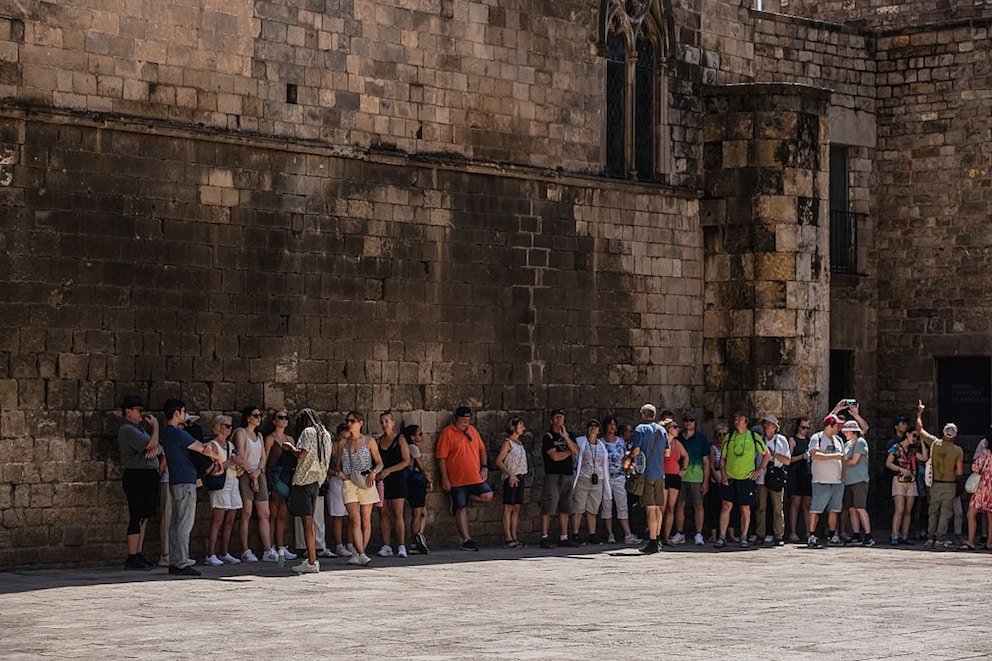July 1, 2025, 10:19 am | Read time: 3 minutes
With temperatures exceeding 40 degrees Celsius, Southern Europe is facing another heat wave—affecting many popular vacation destinations. TRAVELBOOK shares what travelers should keep in mind and how they can best protect themselves from the extreme heat.
Last summer, TRAVELBOOK and numerous other media outlets reported on drought, heat, and fires in Europe. And there’s no end in sight: Especially in Southern Europe, extreme temperatures of up to 115 degrees Fahrenheit in the shade are expected this week. According to BILD, the heat is particularly affecting Southern Spain, Italy, Greece, and Portugal. In Germany, temperatures are also climbing to up to 104 degrees Fahrenheit in many areas this week.
Heat in Europe–Warnings Issued
Current heat warnings show that such extreme heat is a significant strain on the body–they now apply to almost all of France and have also been issued in several Spanish cities and popular Italian tourist hotspots like Venice and Rome. In Italy, temperatures have risen so much that roads are even deforming due to the heat.
The German Foreign Office is currently warning of drought in central and southern regions of Italy. Many areas are already experiencing significant water shortages. Not to be forgotten: Last year, several regions in Greece, Italy, and Spain were hit by severe wildfires.

Also interesting: Can I cancel a trip due to extreme heat?

What you definitely didn’t know about airplanes

This is what lies behind the “Coolcation” travel trend

Rainbow Mountain Is Peru’s Colorful Natural Wonder
How Can Tourists Protect Themselves from the Heat?
Here are some tips on how tourists can protect themselves from the extreme heat:
1. Stay Hydrated
The more we sweat, the more fluids we lose. The Federal Center for Health Education (BZgA) advises on its portal “Climate Human Health” to drink about two to three liters. The best choices are water, (chilled) teas without added sugar, and spritzers. A strategy to achieve this: Drink a glass every hour–even if you’re not thirsty. Thirst only sets in when the body has already lost too much fluid.
2. Keep the Body Cool
Even your outfit can make a crucial difference. The BZgA recommends clothing made of viscose, thin cotton, linen, or silk with loose cuts. This allows air to circulate and cool the skin.
If you’ve ever sat in the blazing sun wearing a black shirt, you know: Color matters too. On hot summer days, light-colored clothing is the best choice. They reflect sunlight, while dark colors absorb its heat, making us sweat even more.
Other ways to cool the body: cool, damp compresses for arms, legs, forehead, or neck. Or hold your wrists under cool, running water. Also good: fill an empty spray bottle with water. This way, you have a homemade water spray to mist your face, arms, and chest anytime while on the go.
3. Don’t Overdo It
Of course, on a city trip, you want to see and experience as much as possible. However, in extreme heat, it’s better to avoid being outdoors during the day and opt for air-conditioned museums or shopping malls. Schedule city walks for early morning or evening hours–and postpone longer hikes for now. Avoid direct sunlight and, if in doubt, bring a sun umbrella. The head should be especially protected from the sun.
With material from dpa

